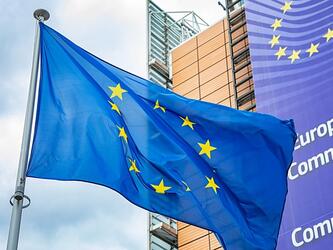Energising the market
Paul de Laat joined Centrica, the international energy and services company, in 2016, as head of data, insight and customer value management. Competition was fierce: a rush of new entrants into the market wanted to break the dominance of the ‘big six’ energy suppliers, including Centrica’s main brand, British Gas.
Roll forward a few years and there are now 65 energy companies in the UK. While British Gas is still the biggest, growing competition – combined with General Data Protection Regulation (GDPR) legislation and a price cap on standard variable tariffs – mean the company has had to change strategic direction to differentiate itself in the market. As a result, its focus has switched from customer acquisition to customer retention, and gaining greater value from more loyal customers.
De Laat and his team are playing a pivotal role in this strategic shift. “I joined Centrica at a time when all profit and loss accounts (P&Ls) operated as product silos – energy supply, boiler installation and servicing, insurance, and so on,” he explains. “We decided to move these product and service areas into a single P&L to remove duplication – including of data and insight. My role was to bring all the data together from across the business to create a single view of the facts, and a single view of the customer across all products and channels.”
As De Laat points out, the company has extensive information, not just on existing customers, but also on the homes where previous customers lived. Pulling information together from multiple sources means British Gas can give the kind of personalised and highly relevant offers and interactions with customers that have been the stock-in-trade of companies such as Amazon and Spotify for years.
“Utilities were a bit behind,” says De Laat, who has worked in similar roles for John Lewis and Waitrose, Lloyds Bank, Vodafone, Orange, O2 and Thomas Cook. “My passion is bringing together the data in an organisation and looking for opportunities by creating insight that can feed into sales, product development and operations. Over the past couple of years, there has been a big effort to build a team with the capability to allow us to do that.”
He describes the team as being “part of the ecosystem – at the centre, feeding the rest of the organisation with data, management information and insight”. The data strategy and operations part of the team pulls together data from multiple sources to understand, at a household level, what products and services are being used. This includes names and addresses captured through products and services, and rough information on the state of equipment in the house, based on installation dates and service engineers’ reports. This is combined with socio-economic profile data, based on where people live.
Three-point approach
Combining this allows the team to do three things. One is to give British Gas management information, such as metrics on the number of people who visit the website and then call the contact centre.
The second is deep-dive analytics – understanding why customers buy the products that they do, profiling groups of similar customers, and looking at the differences between groups, to create more meaningful interactions with them.
The third thing is developing propositions and products that will better appeal to different groups of customers. “What are the unmet needs of our customer base? Which products aren’t doing the right job, and what could we change – could we bundle products together to help customers understand their value better?” says De Laat. Critically, it’s working out which customers would be receptive to ‘intelligent home’ products, such as smart meters, smart thermostats, smart appliances, lights and so on, marketed under the British Gas sub-brand, Hive.
These smart products can be accessed via a mobile phone app, which allows customers to do a range of things remotely, from delaying turning on the heating because they’re going to be late home and checking if they really did switch off the iron before leaving for work, to being alerted that an ageing relative is up in the morning because they have switched on their kettle.
“A big piece of our analytics work is determining for which customers these sorts of products are relevant, and then translating that into practical cases so they can see the value,” says De Laat.
Of course, people who use these products enrich the customer picture still further, creating a virtuous circle that allows the customer value management and operations part of the team to create micro-segments of people likely to want a certain package, and to communicate with them accordingly. “There might be only a few thousand customers every month in a particular micro-segment, but we can manage thousands of micro-segments at once,” says De Laat.
The team used the same tools to create its Rewards loyalty programme. “I spent nine years working in mobile, and at O2 in 2005 the deep customer insight was that existing customers felt newcomers got a better deal. O2 was one of the first to realise this had to stop. Utilities were behind the curve there. For the past 18 months at British Gas, all our deals are available to all of our customers.”
The objective of the Rewards programme – which, among other things, gives customers two free days of energy for every year they stay with British Gas – is to stem the flow of customers to competitors. “We may not be the cheapest, but we want to ensure we offer value for money,” says De Laat, who points to the number of smaller competitors that have built customer bases with aggressive energy pricing to make themselves attractive to predators.
An example is First Utility, which was bought by Shell – but others have gone bust. “Operators such as British Gas are obliged to be the ‘provider of last resort’, which means there is low risk for consumers and the smaller suppliers if things go wrong.”
The work is having an effect: “We have halved the outflow over the past two years, but there is still more work to do,” says De Laat, adding that sheer numbers are less important than the value inherent in retained customers.
Churn among the two million or so (and growing) Rewards programme members is half that of those outside the programme, and about 20% more Rewards members have given permission to use their data than non-Rewards members, “because they see the value exchange”.
Utilities may have been behind the curve in the way they harness and use data, but British Gas is racing to catch up. Mike Follett, managing director of Lumen Research, which uses eye-tracking research technologies to understand what captures consumer attention and drives their behaviour, describes the company as “a real innovator”.
Lumen started working with Patrick Smith, digital marketing manager at British Gas, nearly three years ago, to help increase the effectiveness of the company’s digital advertising and, in the process, nail some industry myths about what builds sales.
At issue was the ‘viewability’ of digital ads. Follett points out that many ads purport to be viewable, but appear either at the bottom of the page – so you never reach them – or at the top of the page once you’ve scrolled down. Other ads appear on the page in front of you, but don’t meet the minimum ‘viewability’ criterion of having at least 50% of the pixels showing for at least one second.
Identifying digital ad value
Lumen focuses on a third category of ads – those that have at least 50% of pixels, and are clearly visible for more than one second. But, even here, there are big differences in attention-grabbing power. Not only are big, bold, beautiful or funny ads better at capturing attention (predictably), but, somewhat less predictably, the site of the ad is a major determinant of the extent to which people engage with it.
“Ads on the sites of major newspapers are much more likely to be seen than the same ads on sites such as eBay or Zoopla,” says Follett – and the most likely explanation is that people on these sites are much more engaged with the content. Mapping British Gas’s historic sales data onto the attention data showed that ads on ‘good’ sites converted into higher sales, too.
Over the past year, British Gas has continued working with Lumen and its media-buying agency Mediacom, to run a series of test and control experiments. These compared ads targeted to, for example, The Times in a discrete geographical area, with the more general approach it has traditionally taken in the rest of the country. The results are convincing: investing in better-quality ads in ‘better’ media may be 50% more expensive than a normal run of the market, but sales are 239% higher.
Follett says British Gas challenges his firm with more and more interesting questions, which forces Lumen to come up with appropriate answers. One finding was that, while ads at the bottom of a page typically have low viewability, on ‘good’ sites, people are much more likely to see them. As Smith explains, “people are really concentrating on what they are reading, so will not only get to the bottom, but also scan around a bit more”. So, you can pay a lower cost per thousand impressions, but earn disproportionately high attention and sales.
The challenge now is to translate this ad hoc manual testing, which is time-consuming, into British Gas’s programmatic media buying. “We are working with Lumen on a new demand-side platform, Avocet [which uses machine learning in planning analysis] and are doing a deep dive into whether we can replicate the attention we got using the manual approach, programmatically, at scale,” says Smith.
GDPR and data transparency
While GDPR is the bane of some organisations’ lives, its effect has been overwhelmingly positive at Centrica, says De Laat. “We make it very clear to our customers, across all touchpoints, that they are in control of their data, that we will not sell it to third parties for marketing purposes, and that we will use it only to deliver more relevant products and services to them. We make it very simple to opt out – and because we are so explicit and transparent about this, our relationships with customers have improved.”
What’s more, GDPR has forced the business to think about what customer data it really needs and what it wants it for, De Laat adds. “We use data better and more consciously now. Data storage is very cheap, but hanging onto it increases your liability – so not only do we have a more open dialogue with our customers about how we use their data, but we are also cleaning up our data constantly.”
He won’t reveal what percentage of customers have opted out, but says it is lower than in some industries, where opting out denies people access to services and functionality. Apple, Uber and WhatsApp are examples of firms for which opting in is integral to the product/service offering. “If you opt out of marketing with us, we don’t switch off your energy,” De Laat says.

We hope you enjoyed this article.
Research Live is published by MRS.
The Market Research Society (MRS) exists to promote and protect the research sector, showcasing how research delivers impact for businesses and government.
Members of MRS enjoy many benefits including tailoured policy guidance, discounts on training and conferences, and access to member-only content.
For example, there's an archive of winning case studies from over a decade of MRS Awards.
Find out more about the benefits of joining MRS here.













0 Comments